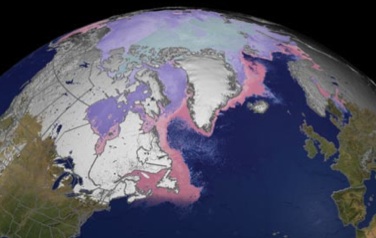|
|
The Observational Challenge
|
In recent years, the cryosphere
has received increasing attention from the climate science community,
national and international policy makers, the media, and the general
public. There are a variety of reasons for this, including:
- The cryosphere is an inherent
component of the
Earth Climate System and is probably the most under-sampled element
within it.
- The cryosphere, particularly
glaciers, the
Greenland ice sheet, permafrost, and Arctic sea-ice, is expected to
undergo dramatic changes associated with the climate change. The
stability of the cryosphere is therefore a high priority issue for
Earth Science with many practical implications.
- Through several feedbacks it
has a large
effect on the predictability of weather and climate, and knowledge of
the cryosphere is therefore vital at many levels of decision-making.
- It plays an important role in
generating and
mediating the conditions for a possible abrupt climate change.
- It is one of the factors of
largest
uncertainty among contributors to mean sea level rise.
- It is an important source for
fresh water
resources for many countries.
- In polar regions sea-ice
critically affects
the pathways and hence patterns of world sea-borne trade, and strongly
influences fishing activity.
- The cryosphere provides many
of the most
useful indicators of long-term climate change.
A broad set of cryospheric observations and data applications are required. We need a comprehensive system of validated remote sensing and in situ observations of the land-based cryosphere, capable of providing a complete picture of solid precipitation, snow reserves, river and lake ice, permafrost, and frozen soil characteristics. In addition to its high value for operational use (e.g., water supply management, flood forecasting, drought prediction, crop forecasts, construction stability assessment, etc.), this system will bridge meteorological and hydrological applications related to the cryosphere, and ensure the incorporation of appropriate variables in the next generation of climate and hydrological models.
The Integrated Global Observing Strategy (IGOS) Cryosphere Theme provided an in-depth assessment of snow and ice observational capabilities and requirements. In this project we address only the satellite component of a cryosphere observing system ("CryOS").
|
|
 |

